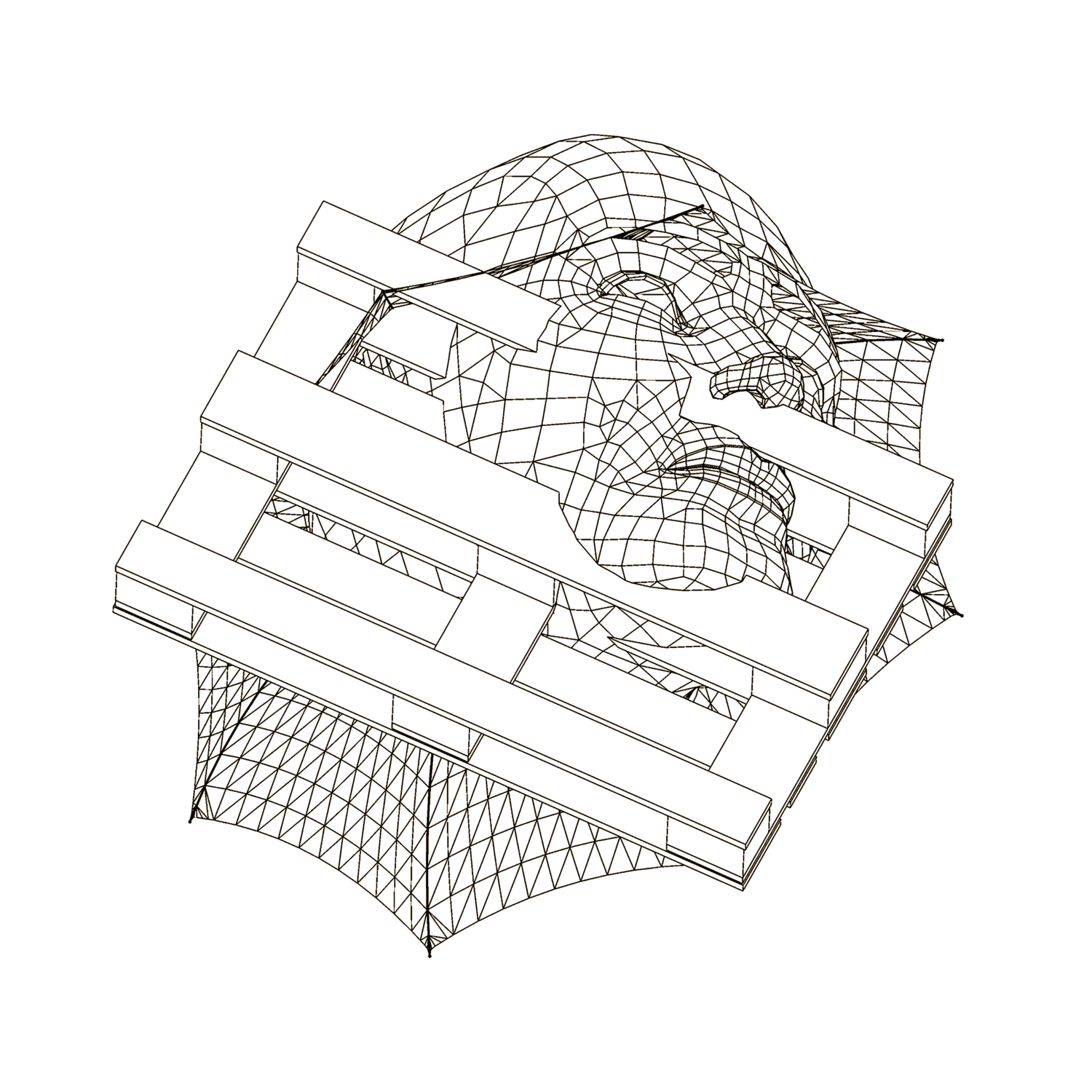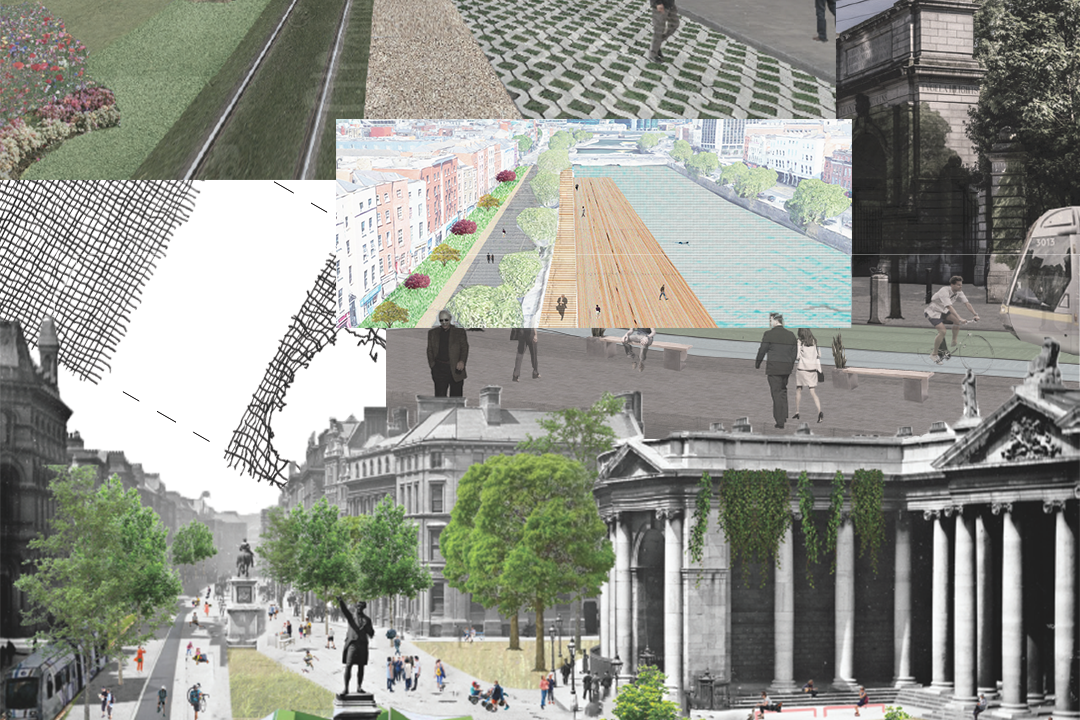Phibsboro Press
Phibsboro Press is an independent publishing imprint, so far having produced sharp pieces on Dublin architecture and photography.
We chatted to founder Eamonn Hall to understand the ethos behind Phibsboro Press, uncover the challenges for the Irish graphic design industry, and hear about next stage for this impressive project.
7 min. read
Phibsboro Press has produced three print publications so far, two focused on architecture, The Forgotten Frontier and Cosmoform, and a photo book, called OK OK. There are plans to cover other topics like design and wider culture in future.
“The idea was born out of a desire to work on projects that were solely self-initiated and self-directed. Back in 2017 I was working in an agency and doing quite a lot of corporate design jobs that were subject to all the usual demands that go along with that type of work. The idea of being completely in charge of all design decisions on a project that wasn’t solely a commercial endeavour was appealing. This along with wanting to focus more on the craft side of print design was the initial motivation.
I also wanted to be able to do design focused on topics that I was interested in. I thought that having a formal entity like a publishing imprint, however small, would allow me to approach writers, photographers etc. with more legitimacy. In terms of getting the ball rolling, the main thing that spurred the whole thing on was finding the right collaborators. Once I did that the momentum built naturally and it took on a life of its own.”
The first publication was The Forgotten Frontier, released in 2017 as a documentary style zine on the controversial Phibsboro Shopping Centre. The infamous building continues to divide opinion; some view it as an iconic example of Irish Brutalism, while others simply think its brutal. The zine is a collaboration between writer Cormac Murray, who wrote the essay that makes up the core text, Eamonn as editor/designer, his sister Breffni who’s a photographer and took the series images used throughout, and Robin Fuller, who contributed an isometric illustration of the building, which really helps to communicate the original design intention of the complex.
Phibsboro Shopping Centre
“I was living in Phibsboro at the time and was fascinated by the shopping centre which is a large (for Dublin) seven story structure with an imposing, Brutalist style concrete facade. It has a slightly menacing look to it and the locals almost uniformly hate it. I loved it though. It reminded me of the architecture you’d see in dystopian science fiction movies like A Clockwork Orange. I do understand why people dislike it. It’s fairly ugly and it doesn’t work very well. The car park in front is always packed and the one on the roof is hardly used and, as far as I can tell, most of the offices in the tower aren’t occupied. It had also been the subject of a long and controversial planning application process involving the DCC and a local resident pressure group, so it was a topic of conversation in the area at the time.
What we were trying to do was to place the building in its proper historical context and examine its value, both aesthetically and also as a functioning, public space. We weren’t trying to change people’s opinions necessarily, we just felt that there was a story worth telling.”
Having read through The Forgotten Frontier ourselves, we found the dreary perception of the Phibsboro Shopping Centre to be communicated aesthetically, but we also gained an appreciation of the building – and the booklet – in the process. The building was intended to be a beacon for the future, but unfortunately was forgotten and let to fall to ruin by the developers, politicians and planners of the time. The history is a fascinating but damning reflection of Irish politics at the time. Thankfully, The Forgetten Frontier ends on an optimistic note, discussing how the building could be enjoyed in the future.
The second publication is called Cosmoform, another collaboration with Cormac Murray. It looks at the Met Éireann Office in Glasnevin, an odd, pyramid shaped building designed by the Irish architect Liam McCormick. Cosmoform mimics the design intention of the building itself, coming across an information pack about a space station. It folds out to become a sharp graphical poster, contributing to its ability to hold value beyond the architectural info contained within.
After some initial research groundwork, Cormac discovered from a friend that a very similar shaped building existed in Zurich: the Ferro Haus designed by the Swiss architect Justus Dahinden.
“Further research on Cormac’s part revealed a number of connections between the two architects and that, in fact, McCormick had been heavily influenced by Dahinden’s ideas. Dahinden was quite a progressive and future-oriented theorist in the vein of architects like Buckminster Fuller and the Metabolist movement in Japan. Cosmoform is about the relationship between these two figures, explored through the Met Éireann Office and the Ferro Haus.”
Phibsboro Press also recently released a photo book, called OK OK¸ featuring work by Myles Shelly. The print presents a series of photos of Dublin during the summer of 2020, when the streets were eerily quiet, capturing the uncertainty of our time.
“Myles shot a series of photographs during the start of the summer when the country was still in the early stages of the lock down and the city was relatively quiet. The shots were taken during the short period before the sun goes down known as the Blue Hour due to the blueish quality the light takes on. The book is a 28 page, A5 size and a limited print run of 100 copies.”
Eamonn’s story, his feeling of being creatively stifled in the big business of advertising, is no doubt a common experience for designers in Ireland and across the world. Having taken the bold step to escape an unfulfilling work environment and focus on his own projects, Eamonn’s thoughts on the opportunities for graphic designers in Ireland are worth listening to.
“You can get a great design education in Ireland, but the industry itself is quite small and the job market for emerging designers can be quite competitive. My sense is that design as a profession is becoming more and more popular. > The 100 Archive> recently launched a research project called Map Irish Design and the numbers show this is the case. Year on year there’s an increase in people entering the industry. The flip side is a healthy sense of competition and hopefully that sharpens our output across the board.
One worry is that design is a service industry and is very vulnerable to economic change. If the economy tanks then design budgets will be the first to get slashed, so it's precarious in that sense. There’s talk of major economic decline as a result of the lockdowns so that’s definitely a worry, particularly if you’re only leaving college and starting out in the industry. It would be great to see design being valued more and seen as central to success of a modern business.”
This reevaluation of design would certainly be hugely welcome. Eamonn's view, linking the fate of Irish designers to broader macroeconomic trends, brought our chat to a point that we're exploring across a lot of our work at the minute: how Ireland is changing and why. We wanted to know if Eamonn felt any particular change stood out.
I think the most interesting change is the cultural one. The kids of immigrants who came here in the late 90s and early 2000s are coming of age and entering the cultural life of the country. Something similar happened in Britain during the 1980s and it produced bands like The Specials and 2-Tone music in general, which was an odd mixture of Jamaican ska, punk rock and new wave. Maybe some new, weird musical forms are going to emerge over the next few years. Or something novel in art or architecture, who knows.
As for Phibsboro Press, this publication has gone from strength to strength, deftly covering different subjects – architecture, photography - and presenting them with a stylish and refined touch. What’s impressive is that the prints are noteworthy objects in their own rights, each with a level of thought and design that merits close attention.
“The aim is to continue working and seeking out new things to write about. The projects are growing in size so that’s a good trend. I would like to progress from zines towards more substantial hardback books which might require additional funding of some kind.”
Keep Phibsboro Press on your radar. There are sure to be more quality projects on the horizon.
Visit phibsboropress.ie to get the suss on the prints that are currently available and follow Eamonn Hall @ehgd.xyz to stay updated on the project.
We value original, substantive ideas – mainstream or alternative, progressive or conservative – and encourage everyone to join our discussion.
content@facmagazine.com











